
|
alpha one (original design)
Introduced in 1955 as part of the new range of Atlas street lighting equipment. Exhibited at the APLE's 1956 Conference.
Designed
for the lighting of highways and motor-roads. Included a
hermetically sealed "Opticell" which gives complete protection to the internal fittings
thus ensuring long life and low maintenace. The "Opticell" was unique
at the time; it comprised an assembly of two plastic mouldings,
a reflector with lamp support and two support pins. The lamp was inserted through an aperature at
one end which was then tightly closed by a combined lampholder and sealing cap held place by
a knurled-screw (initial models) and then by two quick-release clips. By this method the interior was completely sealed and very considerable periods elapsed
before attention other than lamp replacement was necessary. Light control was by two refractor panels cast
into the sides of the Opticell - these were not additionally protected as the interior was hermetically
sealed. A spirit level platform was incorporated into the Opticell to obtain accurate levelling which was
achieved by adjusting the three 3/8" B.S.W. screws that gripped the bracket. Another novel feature was the two types of lamp support position within the Opticell - thus allowing
the lantern to accept smaller wattage sodium lamps. The lantern was awarded a Gold Metal in the Eleventh Milan Trienalle of Architectural and Industrial Art (1957) and was
accepted by the Council of Industrial Design for Design Index.
|
|
PSD/E 1085
|
85W SOI/H
60W SOX
|
BC
|
Side Entry
|
No Gear
|
1956 Journal
1958 Advert
1958 Advert
|
|
PSD/E 1140
|
140W SOI/H
100W SOX
|
BC
|
Side Entry
|
No Gear
|
1956 Journal
1958 Advert
1958 Advert
|
|
|

|
|
|

|
alpha two (original design)
Exhibited at the APLE's 1956 Conference. Described as either a double or
triple-tube five-foot fluorescent lantern. Light control by means of refractor panels. Maintained
photometric performance is kept when only one lamp is in operation so that dimmed operation by
extinguishing a tube is possible.
|
|
Alpha Two
|
2 x 80W MCF
3 x 80W MCF
|
4 x BC
6 x BC
|
Side Entry
|
Gear
|
1956 Journal
1958 Journal
|
|
|

|
alpha three (original with two-clipped shoe)
Introduced in 1957 at the APLE's conference. Embodies the hermetically sealed Opticell principle. For Group A roads. Designed for use with the newly designed
Atlas Fluorescent Mercury lamps (MBF/U). The sides of the canopy itself provided the optical
control. "Since the large fluorescent lamp will tend to obscure any specular reflector at the high angles
and any other control system does not normally give a sharp enough run back from the peak, it is difficult
to achieve a peak intensity at a reasonably high angle and yet provide the good cut-off so necessary with
these high brightness lamps. These difficulties are completely overcome in the Alpha Three by using a
reflector system in which a large proportion of the light sent into the peak is directed around the end of
the lamp instead of underneath. The distribution is then built up by the contribution from a series
of facets and reflector surfaces." The bowl was flat and featured no refractors (unlike later models.)
This resulted in a semi-cut off light distribution (and an aero-sceen version was also available.) Facets in the roof
of the canopy sent the light in all directions from directly downwards up to the angle of the main beam.
Levelling was achieved by the adjustment of the three 3/8" B.S.W. hardened socket set screws that gripped
the barrel. The use of a totally enclosed bowl was taken from the Alpha One design - it was to prevent the
ingress of dirt and ingress and thus cut down on maintenance visits.
It received the approval of the MOT for trunk road lighting. Early noted uses were for Norwich, Windsor and
the service areas on the M1. The two clipped shoe design was superceeded (after seveal years) with
a more conventional clipped bowl assembly. This was probably designed to simplify the use of several
different types of bowl.
|
|
Alpha Three
|
250W - 400W MBF/U
|
GES
|
Side Entry
|
No Gear
|
1958 Advert
1960 Advert
|
|
|
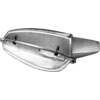
|
alpha three (with four-clipped bowl)
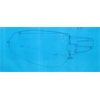
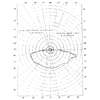 Design based on the original Alpha Three. The two-clipped shoe and totally-enclosed bowl assembly was modified
to include a fixed shoe and detachable bowl held by four clips. It was accepted by the
Council Of Industrial Design for Design Index. Sectional diagrams show a separate specular over-reflector - it
isn't know if this was part of the original design. Later produced by
BLI (British Lighting Industries) and
Thorn under the same name.
Design based on the original Alpha Three. The two-clipped shoe and totally-enclosed bowl assembly was modified
to include a fixed shoe and detachable bowl held by four clips. It was accepted by the
Council Of Industrial Design for Design Index. Sectional diagrams show a separate specular over-reflector - it
isn't know if this was part of the original design. Later produced by
BLI (British Lighting Industries) and
Thorn under the same name.
|
|
PNE.1400/S
|
250W - 400W MBF/U
|
GES
|
Side Entry
|
No Gear
|
1960s Catalogue
|
|
PNF.1400/S
|
250W - 400W MBF/U
|
GES
|
Side Entry
|
No Gear
|
1960s Catalogue
|
|
|
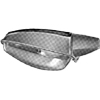
|
alpha three (with one-clip bowl)
Another version with a single clip at the road-side of the lantern
appears in an unknown Atlas catalogue. No other information known. I believe it might be the
normal four-clipped version but the clips have been airbrushed out for the catalogue. Unfortunately
because the description is missing, then it's impossible to tell at the moment.
|
|
PNE.1400/S
|
250W - 400W MBF/U
|
GES
|
Side Entry
|
No Gear
|
1960s Catalogue
|
|
PNF.1400/S
|
250W - 400W MBF/U
|
GES
|
Side Entry
|
No Gear
|
1960s Catalogue
|
|
|

|
alpha four (original design)
Designed for Group "A" lighting. Employs 3 four-foot 40W fluorescent tubes - an uncommon specifcation
but popular on the Continent. The lighting level is well within the Code Of Practice (BSCP 1004:1952)
for Group "A" lighting with 3860 lumens per 100 linear feet of roadway. First large installation was in
the Ulster new town of Newtownabbey - where it was used with Alpha 2s and Beta 2s. The lantern was designed
for (a) a sub-group "A" or super-group "B" lantern which was deemed necessary by some lighting engineers and
(b) for areas where aesthetic considerations indicate that the five-foot fluorescent lantern would be too large.
|
|
Alpha Four
|
3 x 40W MCF
(4' tubes)
|
6 x BC
|
Side Entry
|
Gear
|
1958 Journal
|
|
|
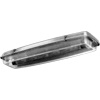
|
alpha five (original design)
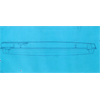
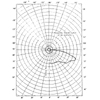 Designed for the lighting of traffic routes using the newly introduced 200W SLI/H lamp. The cross-section
of the arc in the lamp is only 1" in diameter so good light control can be achieved in a lantern of small
dimensions. A sharp run-back above the peak can be achieved in this lantern which is only 7" deep and so
glare from the powerful light source can be avoided. The flux is controlled by a reflector-refractor system: the
refractors direct light into the main beam and give an almost complete cut-off above 90° the reflectors
control the light emitted in all directions below the peak and provide a smooth transition from the
intensity in the peak to the reduced value in the vertically downward direction.
Designed for the lighting of traffic routes using the newly introduced 200W SLI/H lamp. The cross-section
of the arc in the lamp is only 1" in diameter so good light control can be achieved in a lantern of small
dimensions. A sharp run-back above the peak can be achieved in this lantern which is only 7" deep and so
glare from the powerful light source can be avoided. The flux is controlled by a reflector-refractor system: the
refractors direct light into the main beam and give an almost complete cut-off above 90° the reflectors
control the light emitted in all directions below the peak and provide a smooth transition from the
intensity in the peak to the reduced value in the vertically downward direction.
|
|
PG 1200
|
200W SLI
|
2 x Bi-Pin
|
Side Entry
|
No Gear
|
1960s Catalogue
1960s Catalogue
|
|
|
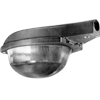
|
alpha seven
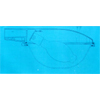
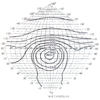 The fluorescent bulb of the lamp reduces inherent brightness of the light source and so
reduces the likelihood of glare from the lantern. The optical system (again referred to as the "Opticell")
is based on a heat-resistant glass refractor with internal prisms and smooth outer glass (this facilitates
cleaning and prevents the build up of dirt and grime.) The prism design co-operates with the fluorescent
mercury lamp to produce a contentrated main beam at 78° from the downward vertical which is designed to provide
good road surface brightness in relation to modern practice in mounting heights and spacing. Re-directing
as much light as possible to the road surface, the optical system ensures that the maximum light
from the merucry lamp is distributed to the lower hemisphere.
The fluorescent bulb of the lamp reduces inherent brightness of the light source and so
reduces the likelihood of glare from the lantern. The optical system (again referred to as the "Opticell")
is based on a heat-resistant glass refractor with internal prisms and smooth outer glass (this facilitates
cleaning and prevents the build up of dirt and grime.) The prism design co-operates with the fluorescent
mercury lamp to produce a contentrated main beam at 78° from the downward vertical which is designed to provide
good road surface brightness in relation to modern practice in mounting heights and spacing. Re-directing
as much light as possible to the road surface, the optical system ensures that the maximum light
from the merucry lamp is distributed to the lower hemisphere.
|
|
PJC/G.1400
|
250-400W MBF/U
|
GES
|
Side Entry
|
No Gear
|
1960s Catalogue
1960s Catalogue
|
|
|
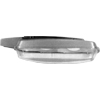
|
alpha eight
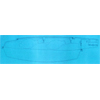
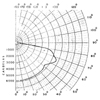 Originally designed as a special lantern for the Marble Arch relighting scheme at the experimental height
of 30'. (This was outside of the specifications at the time but it was one of many experimental installations
of high-power lanterns at heights higher than 25' which anticipated the new specification BSCP 1004:1963).
It was intended for
use in City and Town centres and other areas which required a high level of illumination. It employed two lamps
in tandem which had the effect of creating a linear source, a feature which ensured even road brightness
and was complimentary to the type of distribution and intensities required for Group A1 lighting (BSCP 1004:1963).
Access into the lantern was through a hinged door in the lantern canopy; the bowl itself was sealed to prevent
dust and water ingress and hence cut down on maintenance costs (a similar design was used for the Alpha One and
original Alpha Three). Two reflectors were used to create the semi-cut-off light distribution required with
a sharp run-back to prevent glare.
Originally designed as a special lantern for the Marble Arch relighting scheme at the experimental height
of 30'. (This was outside of the specifications at the time but it was one of many experimental installations
of high-power lanterns at heights higher than 25' which anticipated the new specification BSCP 1004:1963).
It was intended for
use in City and Town centres and other areas which required a high level of illumination. It employed two lamps
in tandem which had the effect of creating a linear source, a feature which ensured even road brightness
and was complimentary to the type of distribution and intensities required for Group A1 lighting (BSCP 1004:1963).
Access into the lantern was through a hinged door in the lantern canopy; the bowl itself was sealed to prevent
dust and water ingress and hence cut down on maintenance costs (a similar design was used for the Alpha One and
original Alpha Three). Two reflectors were used to create the semi-cut-off light distribution required with
a sharp run-back to prevent glare.
|
|
PPC/D.2400
|
2 x 400W MBF/U
|
2 X GES
|
Side Entry
|
No Gear
|
1960s Catalogue
|
|
|

|
beta one
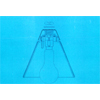
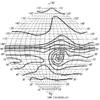 Exhibited at the APLE's 1956 Conference. Inexpensive, small, robust lantern designed for the
lighting of Group B roads in accordance with BSCP 1004:1952. Two types of distribution were available:
one for Group B1 roads (two-way non-axial asymmetric) and another for Group B2 roads (symmetric). The lantern
comprised a two-part plastic refractor, gallery and lampholder. Prisms in the refractor faced inwards thus
the outer surface was smooth to facilitate cleaning. The refractor was designed for GLS and MBF/U lamps.
The refractor intercepted an unusually large amount of light from the source, some of which was
emitted in the upward direction to avoid a sharp shadow line on buildings and trees.
Exhibited at the APLE's 1956 Conference. Inexpensive, small, robust lantern designed for the
lighting of Group B roads in accordance with BSCP 1004:1952. Two types of distribution were available:
one for Group B1 roads (two-way non-axial asymmetric) and another for Group B2 roads (symmetric). The lantern
comprised a two-part plastic refractor, gallery and lampholder. Prisms in the refractor faced inwards thus
the outer surface was smooth to facilitate cleaning. The refractor was designed for GLS and MBF/U lamps.
The refractor intercepted an unusually large amount of light from the source, some of which was
emitted in the upward direction to avoid a sharp shadow line on buildings and trees.
|
PBG/Y/1150 2BC
PBG/X/1150 2BC
|
60-150W GLS
|
BC
|
Top Entry
|
No Gear
|
1956 Journal
1960s Catalogue
1960s Catalogue
|
PBG/Y/1150 ES
PBG/X/1150 ES
|
150W GLS
|
ES
|
Top Entry
|
No Gear
|
1956 Journal
1960s Catalogue
1960s Catalogue
|
PBG/Y/1150 3BC
PBG/X/1150 3BC
|
80-125W MBF/U
|
3BC
|
Top Entry
|
No Gear
|
1956 Journal
1960s Catalogue
1960s Catalogue
|
|
|

|
beta two (original design)
Relies on the "projected area principle" of the "Perspex" bowl to give
efficient light distribution. Visually noticable as it had a sleek black plastic canopy and yellow
end pieces.
|
|
Beta Two
|
2 x 40W MCF
|
4 x BC
|
Side Entry
|
Gear
|
1956 Advert
1956 Journal
1958 Journal
|
|
|

|
beta three
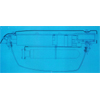
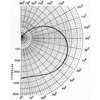 Gear-in-head lantern designed for conversion schemes for Group B roads. Mostly made of
plastic with an internal metal spine for attachment and carrying the weight. Wide canopy designed
to give protection to the gasket between the bowl and the canopy; and to the metalwork. Light
ctronol is based on the projected area principle; this is, for a uniformly bright enclosure the
luminous intensity in any direction will be directly proportional to the projected
area in that direction. In addition, however, the preferential distribution of the
sodium lamp itself is utilised to give added brightness in the direction of the main beams,
so that the distribution is achieved without the use of reflectors or refractor plates.
Gear-in-head lantern designed for conversion schemes for Group B roads. Mostly made of
plastic with an internal metal spine for attachment and carrying the weight. Wide canopy designed
to give protection to the gasket between the bowl and the canopy; and to the metalwork. Light
ctronol is based on the projected area principle; this is, for a uniformly bright enclosure the
luminous intensity in any direction will be directly proportional to the projected
area in that direction. In addition, however, the preferential distribution of the
sodium lamp itself is utilised to give added brightness in the direction of the main beams,
so that the distribution is achieved without the use of reflectors or refractor plates.
|
|
PCC/F/S.1060.T
|
45-60W SOI
40W SOX
|
BC
|
Side Entry
|
Gear
|
1960s Catalogue
1960s Catalogue
|
|
|
|
|
beta four (original design)
Introduced in 1958 and first exhibited at the APLE's conference at Harrogate. Described as a totally enclosed
tungsten or mercury group "B" lantern.
|
|
PDB/Y/2BC1200
|
60-150W GLS
|
BC
|
Top Entry
|
No Gear
|
1958 Journal
|
|
PDB/X/2BC1200
|
60-150W GLS
|
BC
|
Top Entry
|
No Gear
|
1958 Journal
|
|
PDB/Y/3BC1200
|
80-125W MBF/U
|
3BC
|
Top Entry
|
No Gear
|
1958 Journal
|
|
PDB/X/3BC1200
|
80-125W MBF/U
|
3BC
|
Top Entry
|
No Gear
|
1958 Journal
|
|
PDB/Y/ES1200
|
150-200W GLS
|
ES
|
Top Entry
|
No Gear
|
1958 Journal
|
|
PDB/X/ES1200
|
150-200W GLS
|
ES
|
Top Entry
|
No Gear
|
1958 Journal
|
|
PDB/D/2BC1200
|
60-150W GLS
|
BC
|
Top Entry
|
No Gear
|
1958 Journal
|
|
PDB/D/3BC1200
|
80-125W MBF/U
|
3BC
|
Top Entry
|
No Gear
|
1958 Journal
|
|
PDB/D/ES1200
|
150-200W GLS
|
ES
|
Top Entry
|
No Gear
|
1958 Journal
|
|
|
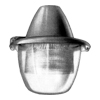
|
beta four
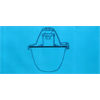
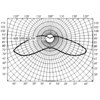 Replacement design of the original Beta Four which was discontinued after the collaboration between
AEI and Atlas. This is the AEI Kirby. Described as an
unobtrusive lantern ideal for many applications. Three different optical systems are available: Diakon refractor bowl,
Opal Perspex Bowl without refractor, and refractor dome with stippled Perspex Bowl. A focusing adjustment mechanism is built into the
sliding lampholder bridge support. The canopy is cast in LM6M silicon alloy and reflector in anodised aluminium. A
Neoprene gasket provides a watertight seal between bowl and canopy.
Replacement design of the original Beta Four which was discontinued after the collaboration between
AEI and Atlas. This is the AEI Kirby. Described as an
unobtrusive lantern ideal for many applications. Three different optical systems are available: Diakon refractor bowl,
Opal Perspex Bowl without refractor, and refractor dome with stippled Perspex Bowl. A focusing adjustment mechanism is built into the
sliding lampholder bridge support. The canopy is cast in LM6M silicon alloy and reflector in anodised aluminium. A
Neoprene gasket provides a watertight seal between bowl and canopy.
|
|
PEB/Y/2BC.1200
|
60-100W GLS
|
BC
|
Top Entry
|
No Gear
|
1958 Journal
1960s Catalogue
|
|
PEB/Y/3BC.1200
|
80W MBF/U
|
3BC
|
Top Entry
|
No Gear
|
1958 Journal
1960s Catalogue
|
|
PEC/S/Z/2BC.1200
|
60-150W GLS
|
BC
|
Top Entry
|
No Gear
|
1960s Catalogue
|
|
PEC/S/Z/ES.1200
|
150-200W GLS
|
ES
|
Top Entry
|
No Gear
|
1960s Catalogue
|
|
PEC/S/Z/3BC.1200
|
80-125W MBF/U
|
3BC
|
Top Entry
|
No Gear
|
1960s Catalogue
|
|
PEB/D/2BC.1200
|
60-150W GLS
|
BC
|
Top Entry
|
No Gear
|
1960s Catalogue
|
|
PEB/D/ES.1200
|
150-200W GLS
|
ES
|
Top Entry
|
No Gear
|
1960s Catalogue
|
|
PEB/D/3BC.1200
|
80-125W MBF/U
|
3BC
|
Top Entry
|
No Gear
|
1960s Catalogue
|
|
|
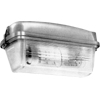
|
beta five
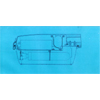
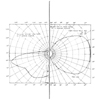 This is the AEI Amber Minor, which was sold by
Atlas after the the collaboration between AEI and Atlas.
Designed for Group B lighting. A special feature is the quickly detachable bowl which can be easily removed
from the bowl ring for cleaning - this has lead to group-cleaning-and-replacement by some lighting
authorities. The bowl is made from Diakon with sealed opal injection moulded Diakon end caps. The canopy is
and bowl ring are made from aluminium with side and top-entry options as per BS 1788. The lamp control gear
is housed in the canopy which allows slim-line columns to be used. An aero-screened version is also
available which includes an extra glass fibre canopy.
This is the AEI Amber Minor, which was sold by
Atlas after the the collaboration between AEI and Atlas.
Designed for Group B lighting. A special feature is the quickly detachable bowl which can be easily removed
from the bowl ring for cleaning - this has lead to group-cleaning-and-replacement by some lighting
authorities. The bowl is made from Diakon with sealed opal injection moulded Diakon end caps. The canopy is
and bowl ring are made from aluminium with side and top-entry options as per BS 1788. The lamp control gear
is housed in the canopy which allows slim-line columns to be used. An aero-screened version is also
available which includes an extra glass fibre canopy.
|
|
PTC/D.1060.T
|
45-60W SOI
40W SOX
|
BC
|
Side Entry
|
Gear
|
1960s Catalogue
|
|
PTH/D.1060.T
|
45-60W SOI
40W SOX
|
BC
|
Side Entry
|
Gear
|
1960s Catalogue
|
|
PTT/D.1060.T
|
45-60W SOI
40W SOX
|
BC
|
Top Entry
|
Gear
|
1960s Catalogue
|
|
PTK/D.1060.T
|
45-60W SOI
40W SOX
|
BC
|
Top Entry
|
Gear
|
1960s Catalogue
|
|
|
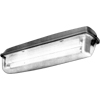
|
beta six (original design)
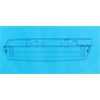
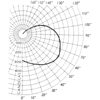 Designed for Group "B schemes where colour of fluorescent lighting
desirable; and designed for conversion schemes as all the gear is incorporated within the
lantern. Constructed from a robust cast aluminium canopy upon which the bowl is secured via two
end catches - one acting as a hinge. The control gear is mounted on a separate hinged tray which
can be easily removed. A symmetric distribution is achieved using either a diffuser bowl or
a bowl fitted with refractor plates.
Designed for Group "B schemes where colour of fluorescent lighting
desirable; and designed for conversion schemes as all the gear is incorporated within the
lantern. Constructed from a robust cast aluminium canopy upon which the bowl is secured via two
end catches - one acting as a hinge. The control gear is mounted on a separate hinged tray which
can be easily removed. A symmetric distribution is achieved using either a diffuser bowl or
a bowl fitted with refractor plates.
|
|
PYM.Q2240.T
|
2 x 40W MCF
|
4 x BC
|
Side Entry
|
Gear
|
1960s Catalogue
|
|
PYX.Q2240.T
|
2 x 40W MCF
|
4 x BC
|
Side Entry
|
Gear
|
1960s Catalogue
|
|
|
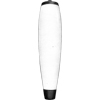
|
gamma one
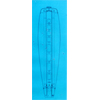
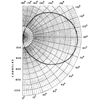 Exhibited at the APLE's 1956 Conference. Elegance and slim modern lines are the dominant feature of the
lantern. Its main use is for lighting avenues, promenades, ornamental gardens and those streets
which are the object of particular civic pride. Has a symmetric light distribution. The opal-plastic diffuser
and coloured cap are manufacturered as one piece which stands on a small ring gasket at its lower end; a design feature
to ensure a hermetic seal and therefore cut-down on maintenance costs due to cleaning. Incorporates quick-start
control gear.
Exhibited at the APLE's 1956 Conference. Elegance and slim modern lines are the dominant feature of the
lantern. Its main use is for lighting avenues, promenades, ornamental gardens and those streets
which are the object of particular civic pride. Has a symmetric light distribution. The opal-plastic diffuser
and coloured cap are manufacturered as one piece which stands on a small ring gasket at its lower end; a design feature
to ensure a hermetic seal and therefore cut-down on maintenance costs due to cleaning. Incorporates quick-start
control gear.
|
|
PVD/Q 4080.T
|
4 x 80W MCF
|
8 x Bi-Pin
|
Post Top
|
Partial Gear
|
1956 Journal
1960s Catalogue
|
|
|
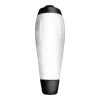
|
gamma two
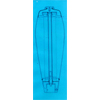
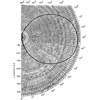 Described as new when exhibited at the APLE's 1956 Conference. For the lighting of Group "B"
roads. Elegance and slim modern lines are the dominant feature of the
lantern. Its main use is for lighting avenues, promenades, ornamental gardens and those streets
which are the object of particular civic pride. Has a symmetric light distribution. The opal-plastic diffuser
and coloured cap are manufacturered as one piece which stands on a small ring gasket at its lower end; a design feature
to ensure a hermetic seal and therefore cut-down on maintenance costs due to cleaning. Incorporates starters
only - the chokes and PF capacitors are supplied on a separate gear tray for remote mounting.
Described as new when exhibited at the APLE's 1956 Conference. For the lighting of Group "B"
roads. Elegance and slim modern lines are the dominant feature of the
lantern. Its main use is for lighting avenues, promenades, ornamental gardens and those streets
which are the object of particular civic pride. Has a symmetric light distribution. The opal-plastic diffuser
and coloured cap are manufacturered as one piece which stands on a small ring gasket at its lower end; a design feature
to ensure a hermetic seal and therefore cut-down on maintenance costs due to cleaning. Incorporates starters
only - the chokes and PF capacitors are supplied on a separate gear tray for remote mounting.
|
|
PVD/B/S 2240.T
|
2 x 40W MCF
|
4 x BC
|
Post Top
|
Partial Gear
|
1956 Journal
1960s Catalogue
|
|
PVD/B/S 4240.T
|
4 x 40W MCF
|
8 x BC
|
Post Top
|
Partial Gear
|
1956 Journal
1960s Catalogue
|
|
|
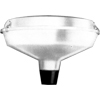
|
gamma three
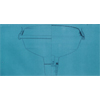
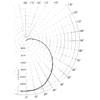 Designed for use with Mercury Lamps and described as for use in city squares. Comprises a one-piece diffuser bowl
which sits on the spigot cap with a hinged aluminium-spun canopy. Produces a symmetrical distribution.
The spigot cap is cast in aluminium silicon alloy.
Designed for use with Mercury Lamps and described as for use in city squares. Comprises a one-piece diffuser bowl
which sits on the spigot cap with a hinged aluminium-spun canopy. Produces a symmetrical distribution.
The spigot cap is cast in aluminium silicon alloy.
|
|
PX.1400
|
250W MBF/U
400W MBF/U
|
ES
|
Post Top
|
No Gear
|
1960s Catalogue
|
|
|
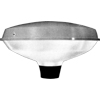
|
gamma four
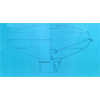
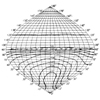 Introduced in 1958 and first exhibited at the APLE's conference at Harrogate. Suited for important thoroughfairs
and points of high traffic density where 20,000 lumens/100 foot are required (where lighting levels beyond those recommended by
by BSCP 1004:1952 are required). Could also be supplied without a light
control system for good all-round distribution for the lighting of city squares and other large areas. Accepted by the
Council of Industrial Design for Design Index. Maintenace achieved by releasing the three stays of the spun aluminium canopy or
by unscrewing the outer covering of the spigot and moving the plastic bowl down on three pegs cast into the
column itself. The canopy is designed to give a good cut-off above the horizontal and to direct maximum light
into the lower hemisphere. Two forms of distribution are available: a reflector system with pinspot plastic bowl is provided to
give a two-way axial distribution so that if desired the lantern may be used in staggered formation for kerbside
mounting; and an opal plastic bowl without reflector system provides a symmetric distribution. By 1960, a version with
three lamps was available. Won a Design Centre Award from the Council of Industrial Design in 1960.
Introduced in 1958 and first exhibited at the APLE's conference at Harrogate. Suited for important thoroughfairs
and points of high traffic density where 20,000 lumens/100 foot are required (where lighting levels beyond those recommended by
by BSCP 1004:1952 are required). Could also be supplied without a light
control system for good all-round distribution for the lighting of city squares and other large areas. Accepted by the
Council of Industrial Design for Design Index. Maintenace achieved by releasing the three stays of the spun aluminium canopy or
by unscrewing the outer covering of the spigot and moving the plastic bowl down on three pegs cast into the
column itself. The canopy is designed to give a good cut-off above the horizontal and to direct maximum light
into the lower hemisphere. Two forms of distribution are available: a reflector system with pinspot plastic bowl is provided to
give a two-way axial distribution so that if desired the lantern may be used in staggered formation for kerbside
mounting; and an opal plastic bowl without reflector system provides a symmetric distribution. By 1960, a version with
three lamps was available. Won a Design Centre Award from the Council of Industrial Design in 1960.
|
|
PWD/C/B.2500
|
2 x 500W GLS
2 x 250-400W MBF/U
|
2 x GES
2 x GES
|
Post Top
|
No Gear
|
1958 Journal
1960s Catalogue
1960 Advert
1960 Advert
|
|
PWD/C/B.3400
|
3 x 500W GLS
3 x 250-400W MBF/U
|
3 x ES
3 x ES
|
Post Top
|
No Gear
|
1958 Journal
1960s Catalogue
1960 Advert
1960 Advert
|
|
PWE/C/Z/B.2500
|
2 x 500W GLS
2 x 250-400W MBF/U
|
2 x ES
2 x ES
|
Post Top
|
No Gear
|
1958 Journal
1960s Catalogue
1960 Advert
1960 Advert
|
|
|
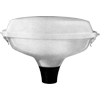
|
gamma five
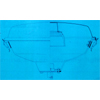
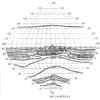 A column and lantern combination designed together for a pleasing daylight appearance. For Group "B" roads.
The lantern and column have been accepted by the Council of Industrial Design for Design Index. The
bowl forms a structural part of the lantern so is made from extra thick plastic - this increases its resistance
to malicious damage. The bowl is attached directly to the belled out end of the column and access is
gained by hinging back the aluminium canopy. Designed for tungsten and mercury fluorescent, a special option exists for
low-pressure sodium. The lantern is available is symmetric or asymmetric refractors with a clear plastic bowl.
Alternatively it may be used without refractors and with an opal bowl to give a general distribution for amenity lighting.
Won a Design Centre Award from the Council of Industrial Design in 1960.
A column and lantern combination designed together for a pleasing daylight appearance. For Group "B" roads.
The lantern and column have been accepted by the Council of Industrial Design for Design Index. The
bowl forms a structural part of the lantern so is made from extra thick plastic - this increases its resistance
to malicious damage. The bowl is attached directly to the belled out end of the column and access is
gained by hinging back the aluminium canopy. Designed for tungsten and mercury fluorescent, a special option exists for
low-pressure sodium. The lantern is available is symmetric or asymmetric refractors with a clear plastic bowl.
Alternatively it may be used without refractors and with an opal bowl to give a general distribution for amenity lighting.
Won a Design Centre Award from the Council of Industrial Design in 1960.
|
PWB/Y/2BC 1200
PWD/2BC 1200
|
100-150W GLS
|
BC
|
Post Top
|
No Gear
|
1960s Catalogue
1960 Advert
|
PWB/Y/ES 1200
PWD/ES 1200
|
150-200W GLS
|
ES
|
Post Top
|
No Gear
|
1960s Catalogue
1960 Advert
|
PWB/Y/3BC 1200
PWD/3BC 1200
|
80-125W MBF/U
|
3BC
|
Post Top
|
No Gear
|
1960s Catalogue
1960 Advert
|
|
|
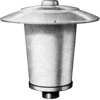
|
gamma six
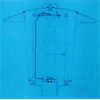
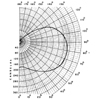 Designed where both the aesthetic appearance and performance
of great importance. Designed for use with either fluorescent mercury, sodium or
tungsten lamps. The aluminium canopy and bowl are detachable in order to facilitate
ease of cleaning and maintainance. The opal diffuser bowl gives a symmetrical
distribution.
Designed where both the aesthetic appearance and performance
of great importance. Designed for use with either fluorescent mercury, sodium or
tungsten lamps. The aluminium canopy and bowl are detachable in order to facilitate
ease of cleaning and maintainance. The opal diffuser bowl gives a symmetrical
distribution.
|
|
PID/F/E.1200
|
150-200W GLS
80-125W MBF/U
45-60W SO/H
40W SOX
|
BC
3BC
BC
BC
|
Post Top
|
No Gear
|
1960s Catalogue
|
|
|
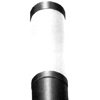
|
gamma seven
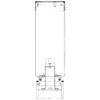
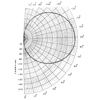 Prompted by the design success of the Gamma Five, the Gamma Seven continues the trend of merging the
lantern and column into one unit. In this case, both of the column and lantern are of the utmost simplistic
design in the form of a plain cylinderical column and lantern. The lantern is designed to give a symmetrical
distribution and is particularly suitable for access roads, pedestrian areas, precinct and forecourt lighting.
The lampholder assembly is mounted directly onto the support strap in the column. The opal glass cylinder assembly
comprising glass and support casting with gasket seating and glazing clips is secured to the column by three
socket set screws. The top cap is secured by springs and is easily removed for lamp replacement. Wall and bollard
versions were also available, based on the same design. It was highly commended in the Council of Industrial Design's
competition for Group B lamp posts held in 1963.
Prompted by the design success of the Gamma Five, the Gamma Seven continues the trend of merging the
lantern and column into one unit. In this case, both of the column and lantern are of the utmost simplistic
design in the form of a plain cylinderical column and lantern. The lantern is designed to give a symmetrical
distribution and is particularly suitable for access roads, pedestrian areas, precinct and forecourt lighting.
The lampholder assembly is mounted directly onto the support strap in the column. The opal glass cylinder assembly
comprising glass and support casting with gasket seating and glazing clips is secured to the column by three
socket set screws. The top cap is secured by springs and is easily removed for lamp replacement. Wall and bollard
versions were also available, based on the same design. It was highly commended in the Council of Industrial Design's
competition for Group B lamp posts held in 1963.
|
|
-
|
80W MBF/U
|
3BC
|
Post Top
|
No Gear
|
1960s Catalogue
|
|
|



